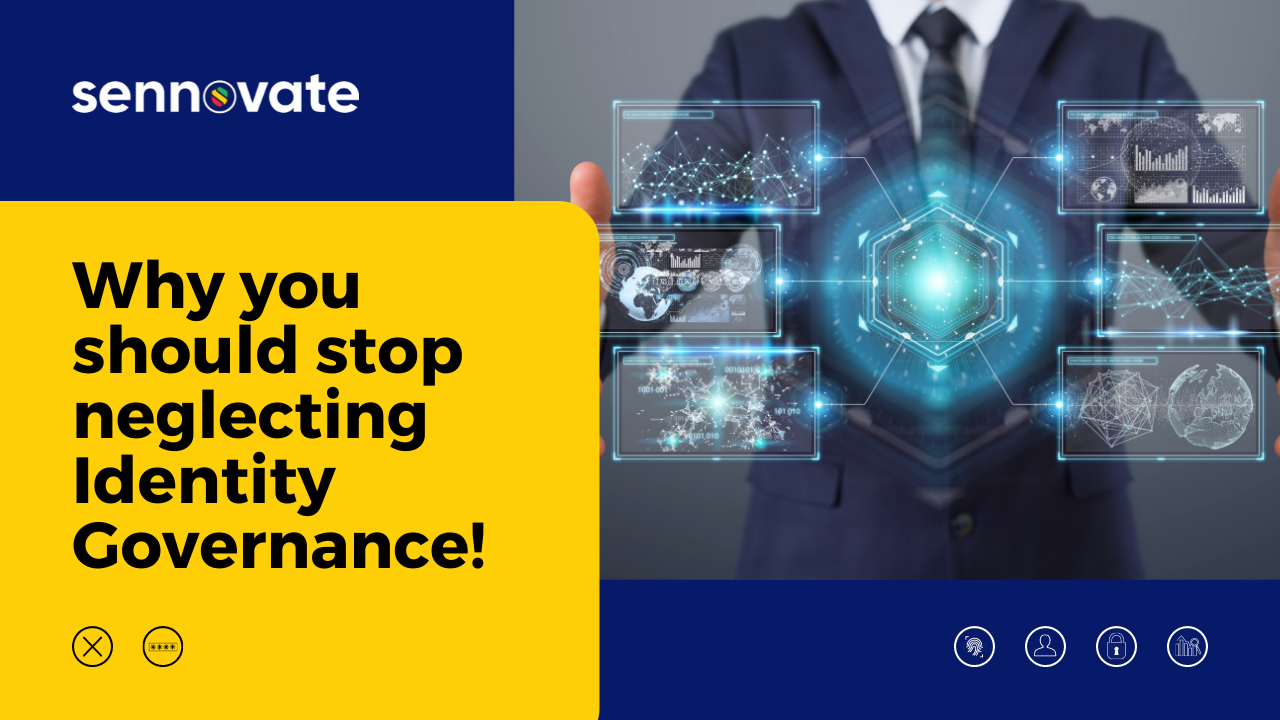

Why you should stop neglecting Identity Governance!
Cybersecurity is a never-ending battle as cybercrime will constantly resurrect. Keeping that in mind, it’s an absolute necessity to ensure that you have established top-notch IT security for your company, irrespective of whether it’s a start-up or a multi-giant.
Regardless of whether you already have the best IAM policy setup in place for your company or are completely oblivious to security policies, this blog is a must-read for you!
What is Identity Governance and Administration(IGA)?
IGA is another important policy that joins the list of acronyms along with IAM and PAM. It’s a combination of 2 components:
- Identity Governance: Addresses the policies and processes that govern the segregation of duties, role management, logging, analytics, reviews, and logging
- Identity Administration: Focuses on administering accounts and credentials, user and device provisioning and de-provisioning, and managing entitlements
While IGA and IAM may sound alike, they certainly aren’t so. The importance of IGA is to extend the functionality and implementation of IAM. It helps automate workflows for access approvals and provisioning/de-provisioning users. But the key purpose of IGA is to offer valuable support in auditing and meeting compliance requirements.
Does your organization need an IGA solution?
While your instincts may tell you to make this decision based on the size of your workforce, your IT team should be the one making this decision. Are they receiving a ton of requests for certification, provisioning, and de-provisioning? Do they need to automate these processes to meet deadlines and for satisfying customers?
Hence, you need to keep these 3 factors in mind while making the final decision:
It relieves the pressure on your IT team
IT teams have a lot of issues and tasks to look into right from monitoring employees’ permissions to provisioning/de-provisioning. Using IGA to harness the power of automated workflows can help streamline these processes. Thus, allowing the IT team to focus more on the true causes of concern in your company network.
Monitors Non-Employee Identities
In a world where paper and pen seem outdated, many applications and software are getting automated. Hence, they don’t require an employee for its functioning. However, these applications can prove to be a potential cyber threat as you never know if they can create identity and permission issues. Thus, it’s important to monitor and regulate the behavior of these 3rd party tools. But, how can you do that?
Identity Governance solutions such as ForgeRock Identity Governance use an AI-driven Analytics Engine to help segment and restrict. Thus, ensuring that you have complete control over your network.
IGA will boost your company’s productivity
We live in a world where ‘time is money’ and hence, we need to opt for solutions that can automate our tasks. With Identity Governance, we no longer have to manage roles and passwords, or access certifications and requests manually. In fact, it helps us eliminate a major inconvenience – managing access to unstructured data.
SailPoint, the only company named as a Gartner Magic Quadrant IGA Leader for the 6th consecutive year, has helped eliminate the issue of determining, analyzing, and controlling which employees have access to all types of data across on-premise and cloud data repositories. Companies can now search across structured and unstructured data to determine where sensitive information lies to manage and protect it.
Still not convinced that Identity Governance and Administration can significantly boost your employees’ productivity, then check out this blog – Save Time and Boost Efficiency with Identity Governance!
How Identity Governance can prevent Data Breaches?
Using the right vendor’s Identity Governance solution can help reduce the impact of a breach by detecting attacks early. Thus, allowing you to impede the hacker’s progress, or even completely prevent the breach from happening.
According to SailPoint’s attack model, there are 4 phases to combat data breaches:
Reconnaissance
This phase involves detecting and changing default administrative usernames and passwords on web-facing servers.
Infiltration
As I mentioned earlier, identity governance solutions help enhance IAM solutions. An identity governance solution can tell the authentication tool to step up or step down the authentication based on the user’s role. Moreover, these solutions can also provide identity and policy data to SIEMs which can further enhance the assignment of roles and access to users, or can even be used to limit access to a user based on geographic location.
Exploitation
One major creep hole through which cybercriminals can hack into your database is through orphan accounts. Orphan accounts are accounts that do not belong to anyone but can be used to gain access to your organization’s databases. Active accounts get converted to orphan accounts when the user’s mail address changes, position in the company changes, or if he/she leaves the company. IGA can help detect these existing orphan accounts and can also prevent new ones from getting created by revoking access from the user once their position changes or when they leave the organization.
Exfiltration
Identity governance solutions are used to help security analytics products assess whether attackers are trying to exfiltrate data i.e. by keeping track of frequent or large file exports from locations outside the scope of the user’s role.
As you’ve seen, IGA solutions offer such a wide range of security services, even beyond the scope of IAM solutions. But that does not mean that you need only IAM or only IGA. Only a combination of IAM, IGA, and PAM solutions can provide your company with enough security to prevent a data breach from happening.



